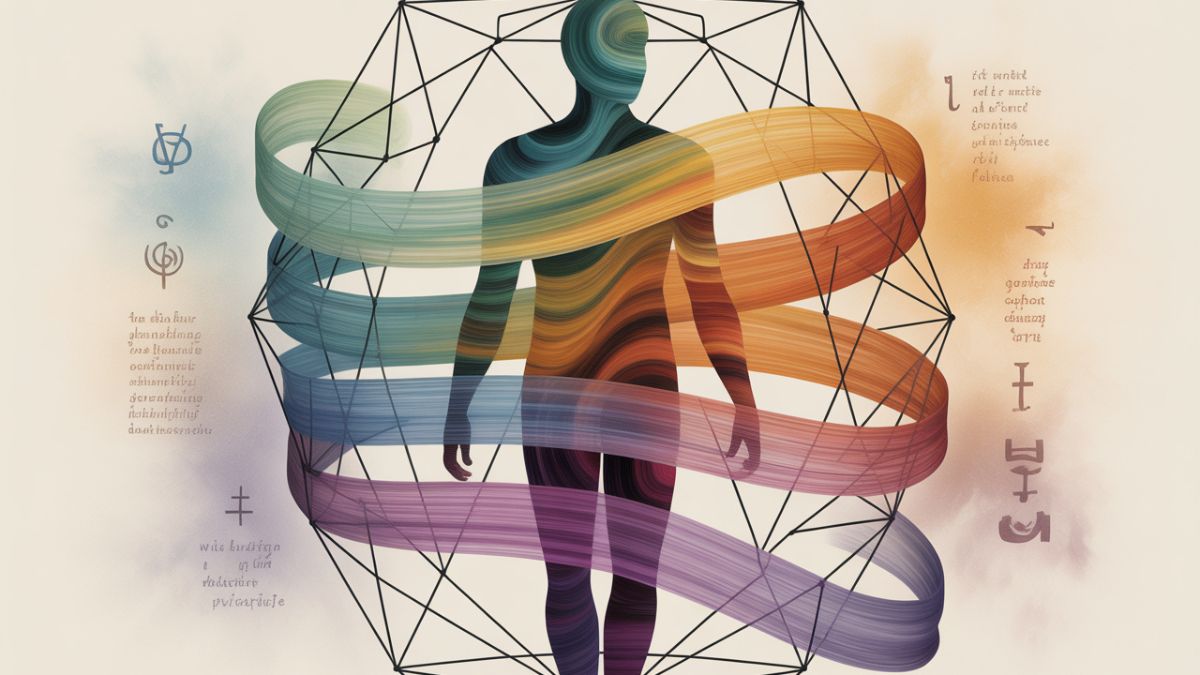In the rich tapestry of global cultural expressions, certain terms and concepts emerge that defy simple translation yet carry profound meaning within their communities. One such term is đeman. Though unfamiliar to many outside specific linguistic or cultural circles, đeman encapsulates a nuanced blend of emotion, social behavior, and philosophical outlook. This article aims to unpack the layers of đeman, exploring its etymological roots, historical context, cultural manifestations, and contemporary relevance. By examining how đeman functions in interpersonal relationships, artistic expression, and societal norms, we gain insight not only into a single word but into a worldview that continues to evolve in the modern era.
While đeman may not appear in mainstream dictionaries or global discourse, its presence in certain regional vernaculars—particularly in parts of the Balkans and among diasporic communities—offers a compelling case study in how language reflects identity, resilience, and adaptation. Over the course of this article, we will encounter đeman not as a static definition but as a living, breathing concept shaped by history, migration, and generational change.
Etymology and Linguistic Roots
The word đeman originates from the Ottoman Turkish term cihannümā, which itself derives from Persian jihān (world) and nigāh (gaze or view). However, through centuries of linguistic evolution in the South Slavic regions—particularly in Bosnia and Herzegovina, Serbia, and Croatia—the term transformed both phonetically and semantically. The initial “c” softened into a “đ” sound (a voiced palatal plosive common in Serbo-Croatian), and the meaning shifted from “world-view” to something far more intimate and personal.
In contemporary usage, đeman often conveys a sense of dignified composure, quiet confidence, or understated elegance—especially in the face of adversity. It is not arrogance, nor is it passivity; rather, đeman suggests a poised self-assurance that does not need external validation. Think of someone who endures hardship without complaint, maintains grace under pressure, and carries themselves with quiet strength—that is the essence of đeman.
Interestingly, the word shares conceptual space with terms like “dignity” in English or “sprezzatura” in Italian (the art of making difficult things look effortless). Yet đeman is distinctly rooted in the historical experiences of communities that have navigated centuries of political upheaval, foreign rule, and cultural synthesis. Its linguistic journey mirrors the resilience of the people who use it.
Historical Context and Cultural Evolution
To fully appreciate đeman, one must consider the historical landscape in which it developed. The Balkans, long a crossroads of empires—Byzantine, Ottoman, Austro-Hungarian—have fostered a culture of layered identities. Under Ottoman rule (15th–19th centuries), local populations adopted and adapted numerous Turkish words, infusing them with new meanings that reflected their own values and experiences.
Đeman emerged during this period as a subtle form of resistance and self-preservation. In a society where open defiance could be dangerous, maintaining inner strength and outward calm became a survival strategy. A person with đeman did not need to shout their worth; their demeanor spoke volumes. This quiet fortitude was especially valued in rural communities, where social cohesion and mutual respect were essential for collective survival.
During the 20th century, as the region experienced wars, socialist regimes, and nationalist movements, đeman took on additional layers. In socialist Yugoslavia, for example, overt displays of individualism were often discouraged, yet đeman allowed people to assert personal dignity without challenging state ideology directly. It became a way to navigate the tension between conformity and individuality.
In post-war Bosnia and Herzegovina, đeman gained renewed significance. Amid the trauma of the 1990s conflict, many turned to traditional values as anchors of identity. Elders spoke of đeman as a moral compass—a reminder to remain composed, generous, and principled even when the world seemed to be falling apart. Thus, đeman evolved from a personal trait into a communal ideal.
Đeman in Everyday Life and Social Interactions
What does đeman look like in practice? Imagine a village elder who, despite losing his home in a flood, welcomes neighbors with tea and calm words. Or a young woman who pursues her education against societal expectations, not with loud protest but with steady determination. These are embodiments of đeman.
In interpersonal relationships, đeman governs how one treats others—especially those in vulnerable positions. It implies fairness, restraint, and empathy. A person with đeman does not boast about their successes, nor do they mock others’ failures. They listen more than they speak, act with integrity, and avoid unnecessary drama.
This concept also influences social etiquette. In many Balkan households, it is considered improper to draw excessive attention to oneself—whether through flashy clothing, loud laughter, or aggressive self-promotion. Instead, modesty paired with quiet competence is admired. This is đeman in action: a social code that prioritizes harmony over individual spectacle.
Moreover, đeman plays a role in conflict resolution. Rather than escalating disputes, someone with đeman seeks compromise, often using humor or indirect communication to defuse tension. This approach reflects a deep understanding of human nature and a commitment to preserving relationships over “winning” arguments.
Artistic and Literary Representations
The spirit of đeman permeates Balkan literature, music, and visual arts. Writers like Ivo Andrić and Mesa Selimović often portrayed characters who embody this quiet strength. In Andrić’s The Bridge on the Drina, for instance, the stoic resilience of ordinary townspeople facing historical upheaval echoes the essence of đeman—enduring without bitterness, remembering without hatred.
In traditional sevdalinka music—a genre rooted in Bosnia and Herzegovina—đeman is expressed through melancholic yet dignified melodies. The lyrics often speak of unrequited love, exile, or longing, but the delivery is never hysterical. Instead, singers convey deep emotion with restraint, allowing the sorrow to resonate without overwhelming the listener. This balance between feeling and control is a hallmark of đeman.
Contemporary artists continue to draw on this concept. Filmmakers such as Danis Tanović (No Man’s Land) depict characters who maintain their humanity amid chaos, reflecting đeman as a moral stance. Even in modern fashion, designers from the region sometimes reference đeman through minimalist aesthetics that emphasize quality over ostentation.
Đeman in the Modern World
As globalization reshapes cultural identities, đeman faces both challenges and opportunities. On one hand, the rise of social media and consumer culture encourages self-promotion, instant gratification, and external validation—values that stand in stark contrast to the humility and patience central to đeman. Younger generations, exposed to global trends, may view đeman as outdated or overly passive.
On the other hand, there is a growing counter-movement that seeks to reclaim traditional values like đeman as antidotes to modern anxiety and disconnection. In an age of performative outrage and digital noise, the idea of quiet strength and emotional maturity holds renewed appeal. Mental health advocates, for example, highlight the benefits of emotional regulation and resilience—qualities that align closely with đeman.
Diaspora communities also play a key role in keeping đeman alive. Families in Germany, the United States, or Australia often teach their children about đeman as part of their cultural heritage. It becomes a way to stay connected to roots while navigating new environments. In this context, đeman is not just a word but a bridge between generations and geographies.
Importantly, đeman is not static. Like all cultural concepts, it adapts. Today, it might manifest as a young professional advocating for justice with calm conviction, or an artist using their platform to uplift others without seeking fame. The core remains—dignity, restraint, integrity—but the expressions evolve.
Misconceptions and Clarifications
Despite its depth, đeman is sometimes misunderstood. Outsiders may interpret it as aloofness, indifference, or even submission. But this misses the point entirely. Đeman is not about suppressing emotion; it’s about channeling it wisely. It’s not about avoiding conflict but about engaging with it constructively.
Another misconception is that đeman is exclusively a masculine trait. While historically associated with male stoicism, women have long embodied đeman—often more so, given their roles as caregivers and community anchors during times of crisis. In fact, many of the most powerful examples of đeman come from women who balanced strength and tenderness in extraordinary circumstances.
It’s also crucial to distinguish đeman from fatalism. While it involves acceptance of things beyond one’s control, it does not imply passivity. A person with đeman acts with purpose—they just do so without fanfare or expectation of reward.
The Future of Đeman
As we move further into the 21st century, the relevance of đeman may grow rather than fade. In a world increasingly marked by polarization, information overload, and emotional volatility, the qualities embodied by đeman—patience, empathy, composure—offer a path toward more meaningful human connection.
Educators, psychologists, and community leaders can draw on đeman as a framework for teaching emotional intelligence and ethical behavior. Schools might incorporate stories and role models that exemplify đeman, helping young people develop inner strength without succumbing to cynicism or aggression.
Moreover, as intercultural dialogue expands, đeman can serve as a point of exchange—a way for people from different backgrounds to recognize shared values beneath surface differences. Just as the Japanese concept of wabi-sabi or the Danish hygge have found global resonance, đeman too has the potential to contribute to a richer, more nuanced understanding of human dignity.
Of course, preserving đeman requires conscious effort. Language shifts, values change, and traditions can erode if not nurtured. But the fact that people still use the word—still strive to live by its principles—suggests that đeman remains a vital part of cultural identity for many.
Conclusion
Đeman is far more than a word; it is a philosophy of being. Rooted in centuries of historical experience and refined through generations of social practice, đeman represents a quiet but powerful approach to life—one that values dignity over display, resilience over reaction, and connection over conquest.
In exploring đeman, we uncover not only a linguistic artifact but a living ethos that continues to shape how individuals relate to themselves, to others, and to the world around them. Whether in a village in Bosnia, a diaspora community in Chicago, or a global conversation about mental well-being, đeman offers timeless wisdom wrapped in understated grace.
As we face the complexities of modern life, perhaps we could all benefit from a little more đeman—not as a relic of the past, but as a compass for the future. By embracing its principles of composure, integrity, and quiet strength, we honor not just a cultural tradition, but a universal human aspiration: to live with meaning, without losing ourselves in the noise.
In the end, đeman reminds us that true strength often speaks softly—and that sometimes, the most profound statements are made not with words, but with presence.












